Once delivered, I began the slow process striping her down, cleaning her up and putting her back together. As you would expect for her age, there was a heap of grease, oil, chips, varnish, several layers of paint and some surface rust (fortunately nothing on the ways and other critical surfaces).
Rear of the apron
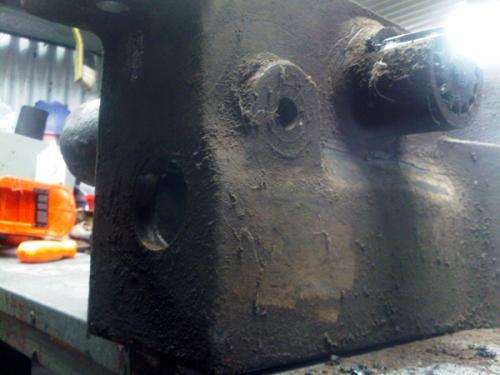
Tumbler, banjo, change gears
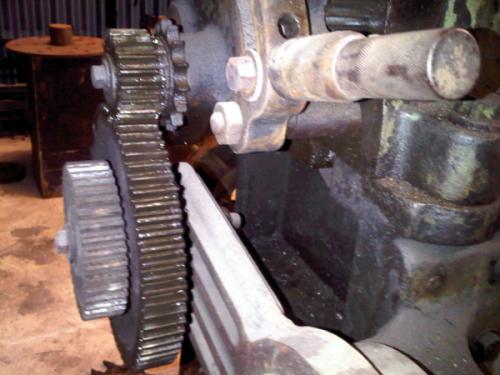
Ways (looking towards the headstock)
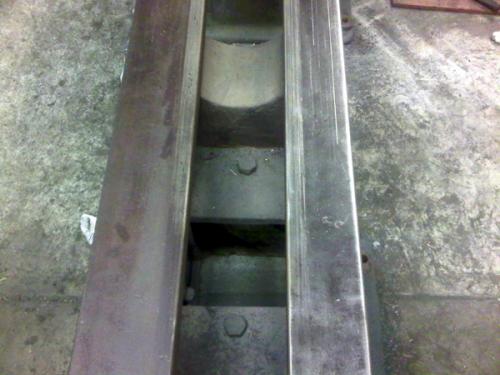
There were some through holes that when viewed from the bottom, looked as if they were blind. It wasnt until I dug chips out of the top and revealed a thread that I made a thread chaser to suit and noticed it pushing out chips from the bottom. The chips were that tightly packed in there that the plug that came out actually had a countersunk head!!!! The half nuts are massive heavy things that are about 6 x 5.
Half nuts!
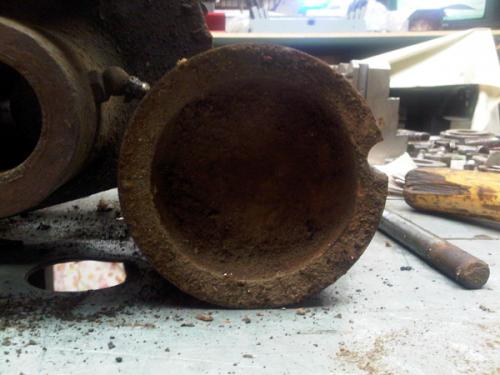

After cleaning

Apron looking a little more presentable
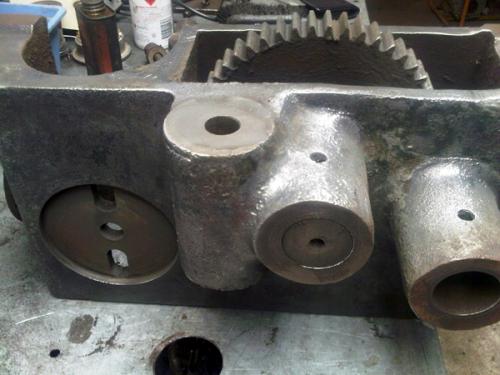
Ways after cleaning

Given her age and the subsequent inherent flaws in some of the castings, I decided that I didnt want to try and give it a perfectly flat, show room finish as I think it would look out of place. As such, I cleaned her down to bare metal where needed and primed and painted. There were a number of different colours on the lathe and it looked like the saddle/apron were originally blue but the rest was either blue or the pale green. I decided on blue in a hammer tone finish. I polished the hand wheel rim and handles but there are pits in them which will never come out and I think they add character.
Paint
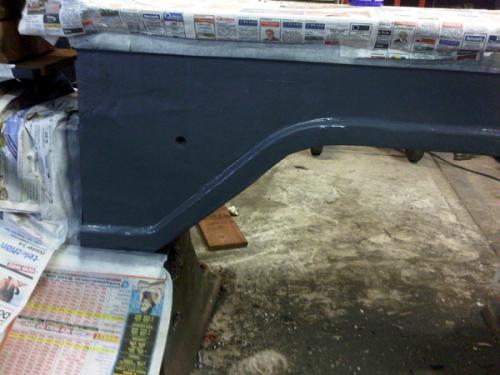
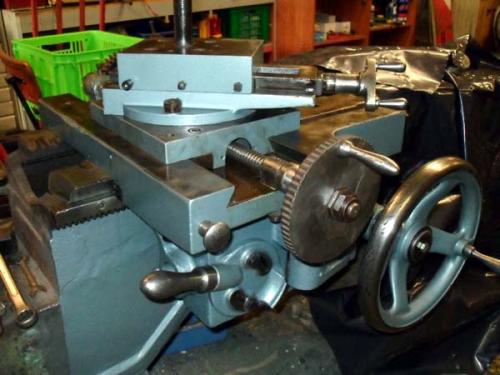
The cross slide wheel hub had broken off and previously been welded on, as had the break in the wheel. Problem was that they had been mig welded, with normal wire and were weak. The chuck adaptor for the 3-jaw chuck was, in fact, a back plate SPOT welded to the chuck adaptor for the 4-jaw. This needed to be rectified, as those welds could let go at any time!
Note the battle scars!

A back plate welded to a chuck adaptor!!
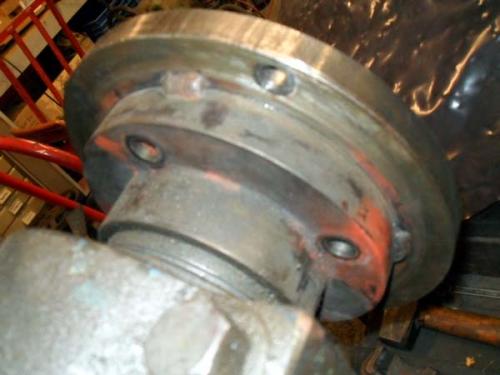
Rear of the apron
Tumbler, banjo, change gears
Ways (looking towards the headstock)
There were some through holes that when viewed from the bottom, looked as if they were blind. It wasnt until I dug chips out of the top and revealed a thread that I made a thread chaser to suit and noticed it pushing out chips from the bottom. The chips were that tightly packed in there that the plug that came out actually had a countersunk head!!!! The half nuts are massive heavy things that are about 6 x 5.
Half nuts!
After cleaning
Apron looking a little more presentable
Ways after cleaning
Given her age and the subsequent inherent flaws in some of the castings, I decided that I didnt want to try and give it a perfectly flat, show room finish as I think it would look out of place. As such, I cleaned her down to bare metal where needed and primed and painted. There were a number of different colours on the lathe and it looked like the saddle/apron were originally blue but the rest was either blue or the pale green. I decided on blue in a hammer tone finish. I polished the hand wheel rim and handles but there are pits in them which will never come out and I think they add character.
Paint
The cross slide wheel hub had broken off and previously been welded on, as had the break in the wheel. Problem was that they had been mig welded, with normal wire and were weak. The chuck adaptor for the 3-jaw chuck was, in fact, a back plate SPOT welded to the chuck adaptor for the 4-jaw. This needed to be rectified, as those welds could let go at any time!
Note the battle scars!
A back plate welded to a chuck adaptor!!
Hunting American dentists since 2015.




